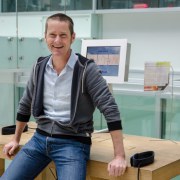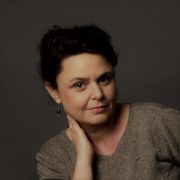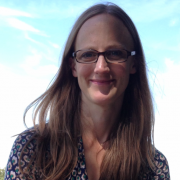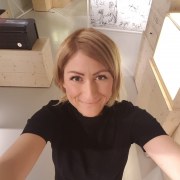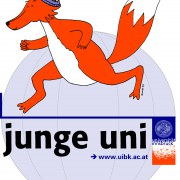Partnering with universities
The academic world can sometimes appear puzzling, complex or even “inert” to other science engagement actors ; however, many fruitful collaborations are possible.
Why (and how) should science centres and universities collaborate better? How do we make sure that communication, cultural, and outreach activities have a productive feedback on research? How can we "measure" that doing outreach can impact researchers in their work? What are the dialogues and differences between "science communicators" and "researchers as communicators"?
More about this session: Participants will get a 2 minute briefing for each of the four angles listed above and join a round table discussion for 25 minutes on the topic of their choice ; then all participants will enjoy 5 minute presentations about each topic, highlighting the best outputs from each group discussion.
Facilitator
Head of Science/Culture Dpt
Session speakers
This year Science LinX merged with the Groningen science shop, the shop holds many years of experience in demand-driven society focused research for various (non-profit) organisations. It also mediates for research or university educational projects. This offers a much needed window for stakeholders to reach into the research community. Participants get to explore synergies between such society-focused research, and other interactive outreach (the E+ project SUSTAIN serves as an example).
Director of science mediation and education
I will discuss an emerging shift in science and culture centers linked with research institutions. A shift from outreach (science centres’ role is to help the public understanding science, for the benefit of the public that will finally start to love science and be happier) to in-reach (science centres’ role is to help research institutions and researchers to understand society, culture, arts, etc., for the benefits of both research (in order to finally start to love the public and be happier) and society.
Head of Communication Office
What are the similarities and differences between engaging scientists for activities in a Science Center and in a Research Institution? Having been on both sides (as director of a science center and head of communication office of a research institute) I will present my view on the subject and would like to share ideas and experiences. I am particularly interested in strategies to involve researchers in science communication and dissemination, the tools we can provide them to become better communicators and at contributing to effective outreach activities.
How to foster the dialogue between researchers and science communicators? The increasing attention of Research Institutions to the so called "3rd mission" has triggered different processes in the relation between researchers and science communicators. What's in it for professional communicators. We will focus on the constant balance between a conflict and possible strategic collaboration. It is not only a matter of training, but a real political challenge. How to tackle it?
UiT - The Arctic University of Norway & Tromsø University Museum
University museums tend to be uniquely situated because they produce scientific research, and have a mandate for public engagement. Using 32 qualitative interviews from Tromsø University Museum, Holly will discuss people’s diverse beliefs about the nature of human knowledge and expertise. This has consequences for both knowledge production and research dissemination. What are some of the challenges associated with research communication? How is it similar or different to science communication?
Head of Global Health Group and Community Engagement
Queen Mary University of London
I am working between Queen Mary University of London and Centre of the Cell, a science centre uniquely placed above the laboratories of the Blizard Institute. The School-based Asthma Project has applied scientific standards and theoretical models during the development of film, theatre, games, and workshops for the development of an intervention, aimed to improve asthma management in teenagers. The effect of the communication tools we created will be evaluated in a randomised control trial.
Expert Associate at Center for the Promotion of Science
Center for the Promotion of Science/Institute for Human Genetics
Head of newly established Department for Cooperation with Scientific and Research Institutions at the Center for the Promotion of Science and her major and most challenging task is to "convince" the universities in Serbia to take part in science promotion and popularization activities. She will provide an insight into the current situation, reflect on major obstacles and discuss the possibilities of overcoming them.
Research is funded by public money and there is a need to give something back to the public. Research institutions and universities rarely deal with popular science communication. In Germany science dissemination in a popular way through social media platforms is being seen as defamatory for the reputation of the researchers among experts. Therefore no researcher will start a dialogue with the public in public. Museums function as mediums to close the gap between science and the public.
Head of Junge Uni, Children´s University of the University of Innsbruck
Which value has (interactive) science communication in Austrian research institutions? Who is involved and which factors are essential for success? The Association ScienceCenterNetwork conducted interviews among impactful people working in this field. The majority of Universities offer science communication programmes (the so called “3rd mission”), but differ in motivation and perspective. The interaction between scientists, research institutions and science centers will be discussed.
Ramallah
Palestinian Territory
Science departments at the Palestinian Universities has much to contribute to the public engagement of science. In this session, I will present our initiatives at the Science Studio where we engaged scientists in debates, seminars and science cafés through our science festival and exhibit development programs. I will talk about ways of university engagement using two science themes: “Material Science” and “Anthropocene”, through which I will highlight the benefits of such engagement in science communication.


